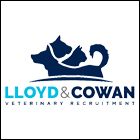UCD Research - October 2019
Prevalence of dog and cat zoonotic endoparasites in the greater Dublin area
UCD veterinary nursing undergraduate, Gemma Howorth carried out a summer research project this year, which further supports the importance of the use of faecal analysis in the control of zoonotic endoparasites in dogs and cats and of educating pet owners regarding the treatment of these endoparasites
Results
A questionnaire, involving 50 members of the public, examined their attitude to worming their pets. The majority of people agreed that they would buy a worming product at their veterinary practice rather than at a pet shop or supermarket. There was a preference for using a ‘spot-on’ product rather than a tablet and a belief that one wormer kills all worms. People had no strong preference to having a faecal analysis done before choosing a wormer either.
Microscopic faecal analysis was carried out on 72 dogs and 24 cats. The only zoonotic parasite identified was Toxocara spp. which occurred in two of the 72 dogs (3%) and six out of the 24 cats (25%) examined. The majority of animals tested were adults (> one year). In adult pets, infections are usually not associated with clinical signs and, therefore, it is difficult to determine whether a pet is infected unless regular faecal examinations are conducted. Only Cystoisospora spp. oocysts were detected in three dogs and one cat. None of the cats excreted Toxoplasma gondii oocysts. All dogs and cats were found negative for Giardia and Cryptosporidium spp.
Toxocara species is a public health concern as larvae may undergo somatic migration, causing serious health concerns if the larvae migrate to the eyes, nerve tracts, or within the brain.1 Ocular toxocariosis may result in retinal damage and vision loss, while visceral toxocariosis may lead to fever, fatigue, and abdominal pain. Young children are at the highest risk of becoming infected.2 It is very stable in the environment and more research is required to create good environmental control measures.
For adult dogs and cats, European Scientific Counsel Companion Animal Parasites (ESCCAP) recommends3 an individual risk assessment for each animal to determine whether anthelmintic treatment is necessary, and how often. Current information suggests that annual or twice-yearly treatments do not have a significant impact on preventing patent infection within a population. Therefore, a treatment frequency of at least four times per year is a general recommendation.
It is clear from the questionnaire results that pet owners do not have an understanding of the efficacy of the drugs they use nor do they follow recommended treatment protocols to control zoonotic parasites. Thus, it is clear that a better education of the public is needed on the control of endoparasites in their pets.
Acknowledgements
We would like to thank Colm Browne from the Dublin Society for the Prevention of Cruelty to Animals animal shelter, for facilitating us by providing animal stool samples for the study. The study was funded by the Summer Research Project Fund (School of Veterinary Medicine, UCD).
Contributors
- Theo de Waal PhD MRCVS, associate professor, School of Veterinary Medicine, University College Dublin.
- Sandra Aungier MVM, PhD, assistant professor in veterinary nursing, School of Veterinary Medicine, University College Dublin.
- Amanda Lawlor BAgrSc, senior technical officer, School of Veterinary Medicine, University College Dublin.
- Good B, Holland CV, Taylor MRH, et al. Ocular toxocariasis in schoolchildren. Clin Infect Dis. 2004; 39(2): 173-8.
- Centers for Disease Control and Prevention. Parasites - Toxocariasis 2013 [Available from: https://www.cdc.gov/parasites/toxocariasis/gen_info/faqs.html.
- ESCCAP. GL1: Worm Control in Dogs and Cats 2017 [Available from: https://www.esccap.org/page/GL1+Worm+Control+in+Dogs+and+Cats/25/#.XYNVvyB7mUk.











